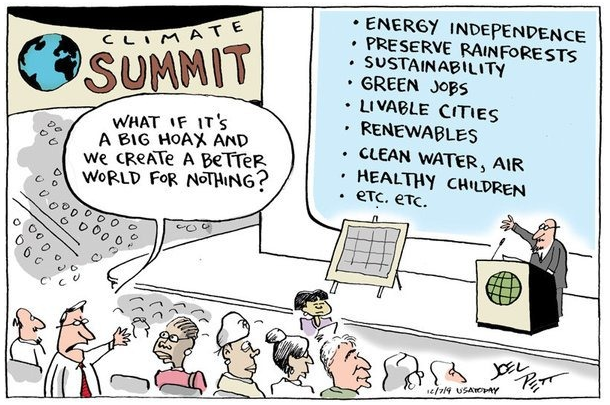Paris 2015 UN Climate Change Conference
For over two decades, United Nations members have held regular meetings to discuss the effects of pollution on the earth’s climate. Starting in Berlin in 1995, an international environmental treaty known as the United Nations Framework Convention on Climate Change (UNFCCC) began its series of annual conferences, referred to as Conferences of the Parties, or COP. The scheduled COP 21 will be held in Paris in December 2015. In preparation for that conference, COP 20 will be held in Lima 1-12 December 2014. The Executive Secretary of UNFCCC, Christiana Figueres, has said the goal of the Lima conference is “a clear draft of the universal agreement, a shared determination by all to deliver significant national contributions to build a low carbon resilient future . . . turning potential into reality on the ground without delay.” Although there is a “do-or-die” tenor to the current debate regarding the imminence of global warming, past history does not bode well for an international consensus.
UN environmental conferences did not begin in 1995. In 1972 Stockholm was the site of a UN Conference on the Human Environment. The conference issued a declaration concerning the environment and development. A UN Conference on Environment and Development held in Rio de Janeiro in 1992, which came to be known as the Earth Summit, resulted in a treaty with the objective to “stabilize greenhouse gas concentrations in the atmosphere at a level that would prevent dangerous anthropogenic interference with the climate system.” The treaty, which also aimed to enable economic development to proceed in a sustainable manner, was signed by 154 nations but contained no binding commitments for limiting greenhouse gases.
Starting with COP 1 in Berlin in 1995, COPs have met to discuss how to achieve the treaty’s aims. Prominent among them was COP 3 held in Kyoto in 1997. The Kyoto Protocol set emission targets for developed countries which are binding under international law. Although President Bill Clinton signed the treaty, Congress did not ratify it. In 2001 the administration of President George Bush explicitly rejected the protocol. All other developed countries signed the treaty, although Canada withdrew in 2012.
Implementation agreements eluded the conferees in subsequent COPs. Because of a complex ratification process, the Kyoto Protocol did not take force until COP 11 in Montreal in 2005, at which time the life of the Protocol was extended beyond its 2012 expiration date and agreement was reached to negotiate deeper cuts in greenhouse emissions. Annual negotiations continued, but an impasse was reached at COP 15 in Copenhagen in 2009. President Barack Obama and other world leaders decided to put off the more difficult issues for the future, instead focusing on a “politically binding accord” negotiated by approximately 25 countries, including the US and China, and signed by 114 countries. The Accord set a global warming limit of 2.0º C above a baseline pre-industrial level. The Accord was formalized at Cancun the following year at COP 16. In 2011 at COP 17 in Durban, South Africa, discussion took place on a Green Climate Fund in the amount of $100 billion per year to help poor countries adapt to climate change.
At COP 18 in Doha, Qatar in 2012, the Kyoto Protocol was amended, with a second commitment period running from 2012 to 2020, and limiting the scope to 15% of global carbon dioxide emissions due to several countries not being subject to emissions reductions, including some of the largest emitters – the United States, Russia, China, India, and Japan. Following COP 19 in Warsaw in 2013, countries were sent home with expectations that each would produce their emission reduction pledges by the first quarter of 2015. That will be preceded by COP 20 in Lima, where all countries are to sign for a global climate change treaty. The hope of COP 21 in Paris in December 2015 is that countries’ contributions will close the gap to meet the 2.0º limit.
After decades of conferences, how likely is a final, international agreement on reducing greenhouse gas emissions? The “Intergovernmental Panel on Climate Change 2013” report presents widely accepted physical science confirming the impact of human activity on climate change. The U.S. Federal Government’s “2014 Climate Action Report” cites executive action taken by the Obama administration with “existing legal authorities,” but adds: “Because the legislative process requires the support of both chambers of Congress and also involves the executive branch, a strong base of support is necessary to enact new legislation. As climate legislation is developed, this high threshold will remain very relevant.” Many countries are watching the U.S. position.
Advocacy from businesses could play a role in influencing U.S. support for UNFCCC action. The World Bank reports finding support for placing a price on carbon among 73 countries and over 1,000 companies. Corporations, insurance companies, and pension funds have called for controls on pollution, worrying that global warming threatens investment value. (See previous blogpost: “Investors Concerned Over Climate Change” )
Other on-going UN programs link poverty elimination, improved health, and global security to tackling climate change. The many interrelations among these goals lend logic to coordination aimed at improving not only the physical environment, but also economic and social conditions world-wide. As the cartoon says, creating a better world.

